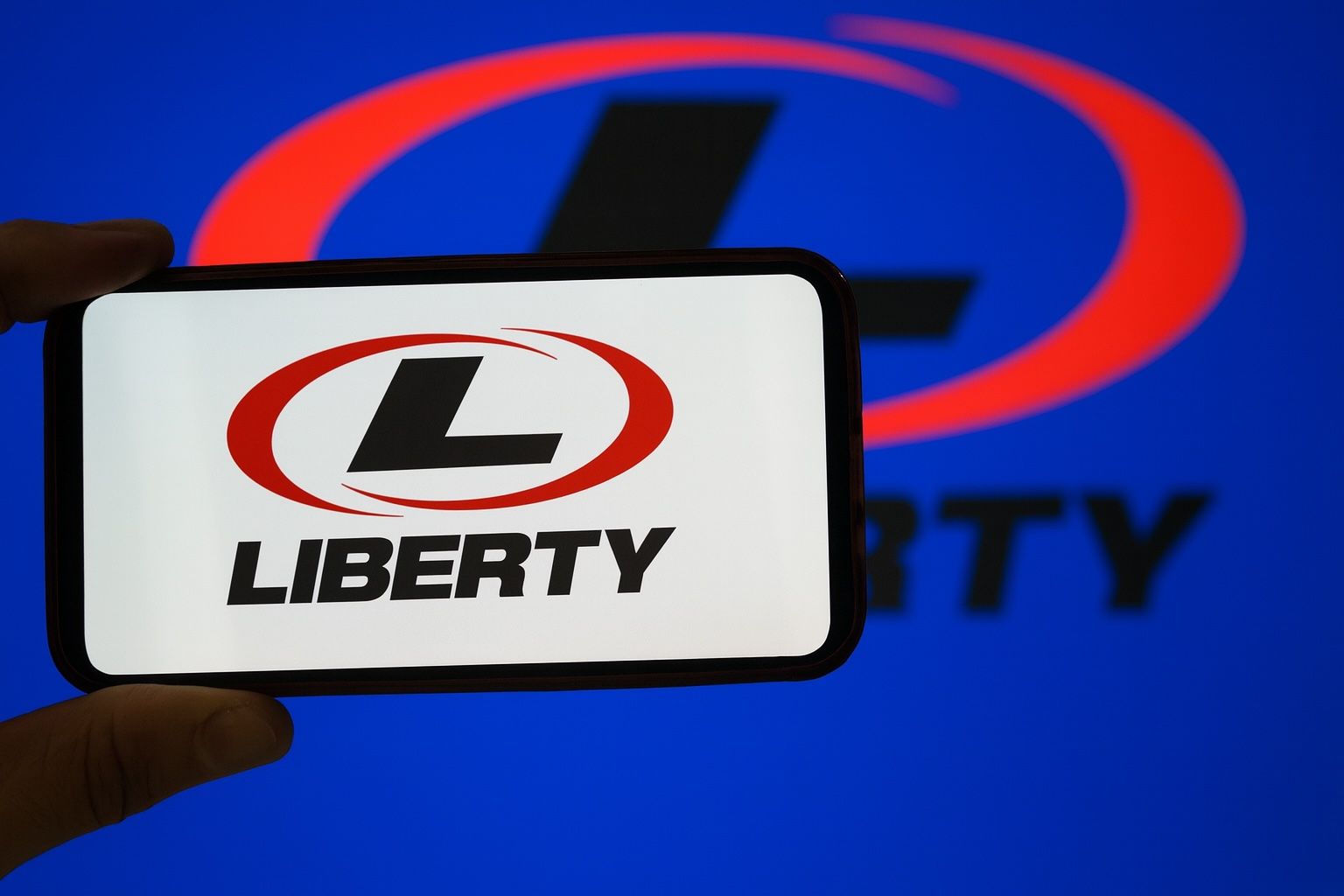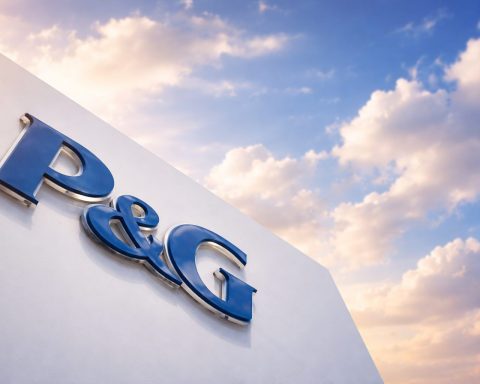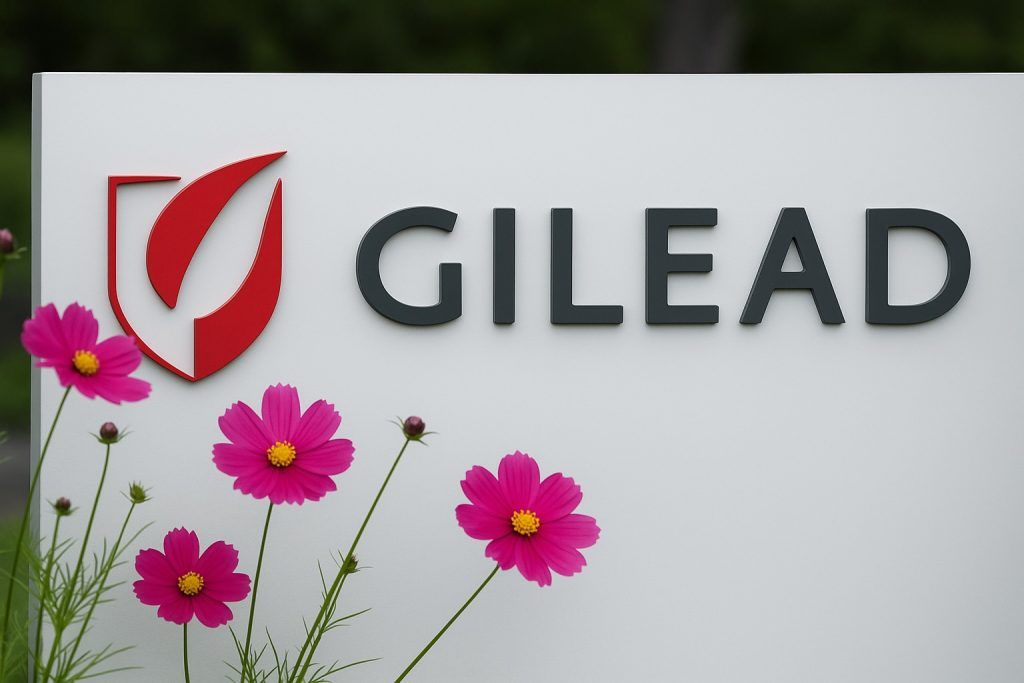Key Facts – October 18, 2025
- Big One-Day Jump: Liberty Energy Inc. (NYSE: LBRT) stock closed at $15.32 on Friday, up 28% in a single session after a strong reaction to its quarterly earnings [1]. It leapt from about $12 to $15+, marking one of its biggest one-day moves this year (previous close was $11.94 [2]).
- Earnings Mixed, Dividend Hiked: Q3 2025 results came in mixed. Revenue was $947 million (down 17% year-over-year) with an adjusted net loss of $0.06 per share – a slight miss versus breakeven expectations [3]. Paradoxically, Liberty posted a GAAP net profit of $43 million thanks to one-off gains, and even raised its quarterly dividend by 13% (to $0.09/share) – a bold sign of management’s confidence [4] [5].
- Stock Recoups Some Losses: Even after this October surge (~+15% month-to-date), LBRT remains well below its early-2025 levels. Shares were down over 40% year-to-date at one point before this rebound [6], and are still far off their 52-week high (~$23.58). The recent spike to the mid-$15s, while dramatic, only closes part of that gap [7].
- Oilfield Slowdown Hits Hard: Liberty’s rebound comes against a tough backdrop for oilfield services. Oil prices have been soft (Brent crude ~$61, down ~3% on the week) amid oversupply forecasts [8]. Drilling and fracking activity in North America slowed sharply in 2025, hurting Liberty’s core business more than diversified peers. (Halliburton and Schlumberger, for example, held up better thanks to international projects.) Liberty’s heavy shale focus meant it felt the downturn swiftly [9] [10].
- Tech and Power Pivot: To weather the slump, Liberty is investing in new technology and markets. In Q3 it launched “Forge,” an AI-powered field optimization tool, and achieved record efficiency in its fracking operations [11]. The company is also expanding into power generation – aiming to exceed 1 gigawatt of capacity by 2027 to serve energy-hungry clients like data centers [12]. These moves diversify revenue streams and position Liberty for long-term trends, even as near-term oilfield demand is weak.
- Analysts Split on Outlook: Experts are divided on LBRT. Bulls argue the stock is undervalued – TS2.tech notes a popular view that Liberty’s fair value is around $14.6 (about 16% above prior trading levels) given steady oil demand and Liberty’s tech edge [13]. Recent bargain-hunting has been fueled by this narrative. Bears and neutrals, however, remain cautious. Wall Street consensus is “Hold,” and the median 12-month price target sits only around $13 [14]. Notably, Barclays cut its rating to Hold (from Buy) just before earnings, lowering its target to $12 and citing near-term headwinds [15] [16]. Zacks currently rates LBRT a “Sell”, warning that weak margins and uncertain demand warrant caution [17] [18].
Stock Skyrockets on Earnings News
Liberty Energy’s latest earnings release sparked a stunning rally in its stock. On October 17, the day after results, LBRT jumped over 20% intraday, hitting the mid-$15 range [19]. It ultimately closed at $15.32 on Friday (Oct 17), up 28.3% in one day [20] – an eye-catching move on a day when broader markets were relatively quiet. The stock had closed at $11.94 the previous day [21], so investors added roughly $3.4 per share of value overnight in response to the news.
This burst of buying follows a prolonged slump. Liberty’s stock spent most of 2025 grinding lower, at one point down over 40% year-to-date by early October [22]. A modest rebound began earlier in the month – shares “caught a bid” and climbed about 15% in October even before earnings [23] – but the earnings surprise accelerated the rebound dramatically. Even after popping above $15, LBRT is still well below where it started the year (over $20) [24]. Long-term holders remain underwater (the one-year total return is still negative), but Friday’s spike provided some relief for those who had endured a brutal slide.
What drove the rally? In short: investors saw glimmers of good news in an otherwise difficult quarter. The Q3 2025 results, released Thursday evening (Oct 16), underwhelmed on the surface – revenue and adjusted profits missed expectations – but contained silver linings that shifted sentiment. Liberty reported $947 million in revenue, about 3% below analyst forecasts (~$975M) and down 17% from a year ago [25], reflecting softer demand. It also posted an adjusted loss of -$0.06 per share, versus expectations for roughly $0.00 (breakeven) [26]. By standard metrics it was a miss and a stark reversal from the $0.45 profit in the prior-year quarter [27].
However, the company also revealed a surprising GAAP net profit of $43 million (${0.26} per share) for Q3 [28], thanks largely to one-time gains and tax benefits. This means that on paper, Liberty was profitable – a much better headline result than the adjusted loss suggested. In fact, analysts had expected basically zero GAAP earnings, so any profit was a positive surprise. Additionally, Liberty hiked its quarterly cash dividend from $0.08 to $0.09 (+13%) [29], an uncommon move for an oilfield services firm during a downturn. Boosting the dividend in tough times sent a strong signal that management is confident in the company’s financial stability and future prospects. “Despite market headwinds, LBRT increased its quarterly cash dividend…demonstrating management’s commitment to shareholder returns and future outlook,” noted one analysis of the results [30] [31].
These upbeat signals – a surprise profit on a GAAP basis and a higher dividend for shareholders – flipped market sentiment in Liberty’s favor, at least temporarily. Traders rushed in Friday morning to snap up the beaten-down stock, driving unusually heavy volume (several million shares traded versus well under a million on an average day). The +28% surge suggests many investors had priced in a much worse scenario. Liberty’s CEO Ron Gusek said the results showed the company’s cost controls and efficiencies are kicking in to offset some of the revenue decline [32]. In other words, even though sales fell, Liberty managed to “do more with less” – evident in record operational metrics – and remained financially resilient. The quarter “was tough but not without bright spots,” as Liberty demonstrated it can navigate the slump with disciplined execution.
Oilfield Headwinds and Liberty’s Strategy
Liberty’s recent struggles and its nascent recovery can’t be understood in isolation – the entire oilfield services sector has faced stiff headwinds in 2025. A combination of lower oil prices and reduced drilling activity created a challenging environment. International benchmark Brent crude has hovered around the low $60s per barrel lately [33], a far cry from the $80+ levels seen at times in 2022–2023. This year, oil prices have been weighed down by oversupply concerns and tepid demand growth, which in turn prompted upstream oil & gas companies to slash spending on new wells. When producers cut back on drilling and fracking, service providers like Liberty see their work volumes dry up.
In North America, the pullback has been particularly acute. U.S. rig counts and fracking activity have fallen significantly in 2025 as shale producers reined in budgets. Liberty – which derives the bulk of its revenue from onshore shale basins – felt the downturn swiftly and sharply [34]. By contrast, larger rivals with more global and offshore exposure (e.g. Halliburton, Schlumberger) fared better, buoyed by steadier international projects and multi-year contracts abroad [35] [36]. Liberty’s concentrated focus on the North American shale patch left it especially vulnerable when that market cooled off. This explains why LBRT plunged over 40% in six months, far worse than the ~10% slide in the average oilfield services stock over the same period [37] [38]. In short, part of Liberty’s selloff was due to industry-wide malaise, and part was company-specific pain from its narrower footprint.
Yet within this difficult climate, Liberty’s management has been taking steps to adapt and fight back. One pillar of its strategy is technology innovation. In the earnings call, CEO Gusek highlighted that Liberty achieved its highest-ever pumping efficiency and safety performance in Q3 [39] – essentially, they are finding ways to pump more (and more safely) with fewer resources, a critical advantage when business is slow. The company also unveiled a new in-house AI initiative called “Forge,” described as a large language model to help optimize field operations [40]. This AI-driven tool aims to improve decision-making and operational tuning on the fly, potentially reducing costs and downtime for Liberty’s fracking crews. Such tech investments could give Liberty a leg up in productivity, differentiating it from competitors by offering smarter, more efficient service. It’s a bet that embracing digital transformation will pay dividends even in a traditionally gritty industry.
Another strategic move is diversification into power solutions. Liberty has been quietly building out a business in on-site power generation through its Liberty Power Innovations unit. The company is planning to boost its power capacity to over 1 gigawatt by 2027 [41] – roughly equivalent to a large power plant. The idea is to serve “energy-intensive customers” (like data centers, mines, and industrial sites) with reliable electricity, leveraging Liberty’s expertise in energy infrastructure. This not only opens a new revenue stream outside of oil & gas drilling, but it also aligns with broader trends: data center power demand is rising, and on-site generation can offer resiliency and cost savings. By 2027, Liberty could be as much an energy provider as an oilfield service firm. These forward-looking initiatives – from AI software to kilowatts – indicate management isn’t just waiting idly for oil prices to rebound; they are proactively positioning the company for the future.
In the meantime, Liberty has also focused on financial discipline to ride out the downturn. In Q3, it kept capital expenditures in check (capex was about $113M, roughly in line with its reduced budget) and maintained adequate liquidity (~$146M available including cash) [42]. The company’s balance sheet is relatively strong – debt levels remain moderate (debt-to-equity below 8% per one analysis) [43] and it continues to generate positive operating cash flow. This financial stability is what allowed Liberty to continue paying and even raising its dividend, which now yields roughly 3% annually [44] – above industry averages. By tightening its belt and innovating, Liberty is aiming to “buffer the slump until industry tailwinds return,” as management put it [45].
Expert Analysis and Commentary
Is Liberty Energy a bargain or a trap? Analysts and investors are debating that very question in light of the stock’s rollercoaster ride. A detailed analysis on TS2.tech captured the sentiment divide: on one hand, a bullish camp sees Liberty as oversold and positioned for recovery; on the other, a cautious camp warns that challenges aren’t over yet.
The Bull Case: Optimists argue that LBRT’s steep decline in 2025 was overdone relative to its long-term fundamentals. TechStock² (TS2.tech) notes a popular bull narrative that Liberty is undervalued by roughly 16%, with a fair value estimate around $14.61 per share based on steady oil demand and Liberty’s tech advantages [46]. Even after this week’s bounce, the stock is only in the mid-$15s, which by that math is still in undervalued territory. Indeed, some investors jumped in to buy LBRT earlier in October precisely because it looked like a bargain – the company has tangible book value and assets that belied its single-digit stock price at the lows. By traditional valuation metrics, Liberty looks cheap: even now it trades at only ~0.5 times sales [47] and under 1.0 times book value, which is inexpensive for a market-leading fracking services firm. Its enterprise value (EV) has shrunk to a fraction of what it was during the 2022 oil boom [48]. For believers in the oil cycle, such low multiples suggest significant upside if and when industry conditions normalize.
Moreover, Liberty’s innovations and operational strengths bolster the bull case. The company’s investments in AI, efficiency, and power diversification could pay off in higher margins down the road. Its strong balance sheet and prudent cost management mean it can survive the downturn and potentially thrive when activity rebounds [49]. Bulls also point out that Liberty’s management has skin in the game and a track record of navigating industry cycles (the company, founded by now-former CEO Chris Wright, grew rapidly during the last shale boom). All these factors give reason to think LBRT could be a classic rebound story – a fundamentally solid company whose stock has been beaten down by a temporary industry slump. If oil prices firm up or drilling picks up sooner than expected, Liberty’s earnings could snap back, and its stock might rally further to “catch up” to peers [50]. Some analysts have high targets: for example, Stifel’s analyst Stephen Gengaro maintained a “Strong Buy” with a $19 target in July [51], implying confidence that Liberty’s fortunes will improve significantly.
The Bear (or Neutral) Case: Not everyone is convinced the worst is over. Wall Street consensus on LBRT remains mostly Hold, reflecting a view that the stock may perform in line with the market, not markedly better [52]. Before the earnings pop, the median analyst 12-month price target was around $13 [53] – essentially where the stock was trading pre-rally, implying limited upside. While some of those targets may get revised after the earnings news, it’s telling that even optimistic analysts weren’t expecting a return to anywhere near last year’s highs in the near term. In fact, just days before the earnings, Barclays downgraded Liberty from Buy to Hold, dropping its price target from $14 to $12 [54] [55]. The Barclays analyst cited “near-term challenges” and uncertainty in Liberty’s core markets as reasons to temper expectations [56]. This downgrade encapsulates the cautious sentiment: yes, Liberty is a well-run firm, but the macro environment is still a drag, and the stock’s slump may be justified by deteriorating financial performance.
Those deteriorating financials are a key bear argument. Liberty’s profitability has eroded: its net profit margins fell to around 5% (or less) from ~9% a year earlier [57], and analysts forecast margins could shrink toward ~1% by 2028 if pricing pressures persist [58]. Essentially, the company might barely break even for a while. Indeed, consensus earnings forecasts for Liberty have been slashed – the company is expected to earn only a few cents per share next year, down ~84% from last year [59] [60]. With earnings collapsing, Liberty’s forward P/E ratio has skyrocketed (one calculation puts it from ~31x to over 350x in just a quarter) [61]. Such a high P/E (caused by tiny projected profits) makes it hard to call the stock “cheap” in the near term. It illustrates how much the outlook has weakened.
Zacks Investment Research currently ranks LBRT as a “Sell”, explicitly warning of “multiple headwinds – weak margins, pricing pressures, uncertain demand – that warrant staying on the sidelines for now” [62]. The fear is that Liberty could be a value trap: superficially low-priced but facing fundamental issues that keep the stock depressed. If oil prices remain low or fall further, or if U.S. shale activity continues to stagnate into 2026, Liberty’s business might stagnate as well, limiting any stock upside. There’s also concern that Liberty’s new ventures (like power generation and tech) are too small to offset the core pressure in fracking services in the immediate future [63]. These initiatives are promising, but they won’t meaningfully boost revenue for a few years; in the meantime, the company is still at the mercy of the drilling cycle. Bears emphasize that Liberty’s fortunes are tied to forces out of its control – namely, commodity prices and capital spending trends in the oil patch. Those remain uncertain and could even worsen if, say, a global economic slowdown hits oil demand.
In summary, the market mood around Liberty is mixed: cautious optimism from some, guarded skepticism from others. As one commentator put it, Liberty now offers a “compelling but risky rebound narrative” – it looks “undervalued” if you trust that the cycle will turn up soon, but still vulnerable if the oil patch stays in the doldrums [64].
Short-Term Forecast and Long-Term Outlook
After its earnings-fueled jump, what’s next for Liberty Energy stock? In the short term (next few weeks to months), experts say volatility is likely to continue [65]. The stock’s 28% spike shows how rapidly sentiment can swing on news. Any fresh developments in oil markets or drilling activity could spur outsized moves in LBRT. For instance, a rise in oil prices or a bullish rig count report might extend Liberty’s rally – but conversely, if crude slips or recession fears mount, profit-taking could quickly drag the stock back down. Analysts expect continued choppiness: as Liberty’s own management acknowledged, “market headwinds [will] persist in the near term” [66], so quarterly results may remain underwhelming through at least the next couple of quarters. Don’t be surprised if LBRT sees further ups and downs as investors digest each new data point from the oil patch. In the coming weeks, news flow – OPEC decisions, inventory reports, geopolitical events – could whipsaw oil prices and by extension influence Liberty’s share price. Traders should brace for a bumpy ride rather than a smooth climb.
Over the medium term (the next 1–2 years), there is a cautious expectation that things could stabilize and gradually improve for Liberty. Management is forecasting a recovery in the industry’s fundamentals (fracking activity and pricing) by late 2026 as the current oversupply works itself out [67]. In other words, the company believes the cyclical downturn may bottom out within the next year. By the second half of 2026, if oil and gas prices firm up, even a modest uptick in drilling demand could tighten capacity in the service market and restore pricing power in Liberty’s favor [68]. This scenario would likely lift Liberty’s utilization rates and margins off their current lows. Many on Wall Street are looking for “gradual stabilization” in Liberty’s performance over the coming quarters [69] – not an immediate rebound, but the start of a slow climb back. Under this base case, Liberty might return to consistent profitability at some point in 2026, setting the stage for a more meaningful stock recovery.
Crucially, Liberty’s own actions during the slump (cost cuts, tech adoption, diversifying into power) could make it a leaner and more versatile company when the tide turns. If the strategy pays off, Liberty could emerge from the downturn in a stronger competitive position, potentially rewarding patient investors. However, the timing and magnitude of any recovery remain uncertain – and that’s where the pros vs. cons come in.
Pros (Reasons for Optimism):
- Undervalued Assets: By classic metrics (price-to-sales ~0.5, price-to-book ~0.9), LBRT looks cheap [70]. If the fracking cycle rebounds, the stock has significant upside just to reach peer multiples or analysts’ fair value estimates around the mid-teens [71] [72].
- Strong Balance Sheet & Dividend: Liberty has manageable debt and kept a solid liquidity cushion [73]. It even raised its dividend in a downturn [74], indicating confidence. Investors are paid to wait (dividend yield ~3% [75]) for a turnaround.
- Operational Excellence: The company achieved record efficiency and safety stats in Q3 [76], showing it can operate profitably even at lower activity levels. Aggressive tech adoption (e.g. the Forge AI platform) and cost controls are helping Liberty “do more with less,” which bodes well for margins when demand returns.
- Strategic Diversification: Expansion into on-site power generation (targeting 1+ GW by 2027) opens new revenue streams [77]. This could reduce reliance on oilfield services and tap into growing energy infrastructure markets, providing growth drivers beyond the volatile drilling cycle.
Cons (Risks and Challenges):
- Near-Term Industry Slump: The North American shale downturn may drag on. Rig counts are at multi-year lows, and producers remain cautious. Liberty faces at least a few more quarters of weak demand and pricing pressure, which could lead to continued losses or minimal profits [78]. If oil prices slip further (or even stay around $60), E&P spending might not pick up as hoped.
- Earnings Deterioration: Liberty’s earnings outlook is bleak in the immediate future. Analyst consensus sees EPS collapsing by over 80% this year and barely above breakeven next year [79] [80]. Profit margins have compressed and could fall to near zero without a market turnaround [81]. Any negative earnings surprises or setbacks in cost control could spook investors again.
- Limited Diversification (for now): Despite new initiatives, Liberty’s core business is still U.S. fracking services. It lacks the geographic and product diversity of bigger rivals, leaving it vulnerable to regional downturns [82] [83]. Its power and tech ventures, while promising, are in early stages and not yet generating meaningful revenue to offset oilfield weakness.
- Market Sentiment & Competition: Given its volatility, LBRT may struggle to regain investor trust in the short run. Many analysts remain on the fence (consensus Hold [84]), and one major bank downgrade underscores the wary outlook [85]. Additionally, competition in the oilfield services space is fierce; if the pie stays small, companies could engage in price wars that hurt margins further. Liberty’s reliance on “frac” work means it competes heavily on price and efficiency, and any misstep could cost it contracts.
Bottom Line: Liberty Energy’s stock comeback this week is a testament to how quickly sentiment can shift with a dose of good news. The company’s earnings surprise and dividend hike have given investors hope that the worst may be passing [86]. Still, this remains a story of “short-term pain, long-term potential,” as one analysis put it [87]. The near-term outlook is cloudy – continued volatility and caution as the oilfield downturn grinds on – but the long-term thesis is that Liberty’s resilience and strategic bets (technology, power, and efficiency gains) position it to ride the next upcycle. If the industry finds its footing by 2026 and Liberty executes well, the stock’s current lows could in hindsight look like a great buying opportunity. For now, LBRT offers both opportunity and risk in equal measure: it’s a beaten-down energy player with clear catalysts for recovery, yet one that is still at the mercy of macro forces.
Investors and market watchers will be closely monitoring the coming quarters. Will Liberty’s upbeat management outlook and innovation drive pay off? Or will more turbulence hit this once high-flying fracking specialist before brighter days arrive? The stakes are high for Liberty Energy, making it a stock to watch in the oilfield services arena as 2025 winds down and the new year approaches. The next few months – including macro trends and Liberty’s own Q4 results – should provide clearer signals as to whether this recent rally marks the start of a sustained comeback or just a temporary relief in Liberty’s rollercoaster ride [88] [89].
Sources: TS2.tech (TechStock²) analysis of Liberty Energy [90] [91] [92]; Reuters market data [93] [94]; Liberty Energy Q3 2025 earnings details [95] [96]; Simply Wall St / Yahoo Finance commentary [97] [98]; StockAnalysis/Barclays rating update [99] [100]; Zacks Investment Research via Nasdaq [101]; and Liberty investor materials.
References
1. www.reuters.com, 2. www.reuters.com, 3. ts2.tech, 4. ts2.tech, 5. ts2.tech, 6. ts2.tech, 7. ts2.tech, 8. ts2.tech, 9. ts2.tech, 10. ts2.tech, 11. ts2.tech, 12. ts2.tech, 13. ts2.tech, 14. ts2.tech, 15. ts2.tech, 16. stockanalysis.com, 17. ts2.tech, 18. ts2.tech, 19. ts2.tech, 20. www.reuters.com, 21. www.reuters.com, 22. ts2.tech, 23. ts2.tech, 24. ts2.tech, 25. ts2.tech, 26. ts2.tech, 27. ts2.tech, 28. ts2.tech, 29. ts2.tech, 30. ts2.tech, 31. ts2.tech, 32. ts2.tech, 33. ts2.tech, 34. ts2.tech, 35. ts2.tech, 36. ts2.tech, 37. ts2.tech, 38. ts2.tech, 39. ts2.tech, 40. ts2.tech, 41. ts2.tech, 42. ts2.tech, 43. simplywall.st, 44. www.reuters.com, 45. ts2.tech, 46. ts2.tech, 47. ts2.tech, 48. ts2.tech, 49. ts2.tech, 50. ts2.tech, 51. stockanalysis.com, 52. ts2.tech, 53. ts2.tech, 54. stockanalysis.com, 55. stockanalysis.com, 56. ts2.tech, 57. simplywall.st, 58. simplywall.st, 59. stockanalysis.com, 60. stockanalysis.com, 61. ts2.tech, 62. ts2.tech, 63. simplywall.st, 64. ts2.tech, 65. ts2.tech, 66. ts2.tech, 67. ts2.tech, 68. ts2.tech, 69. ts2.tech, 70. ts2.tech, 71. ts2.tech, 72. ts2.tech, 73. ts2.tech, 74. ts2.tech, 75. www.reuters.com, 76. ts2.tech, 77. ts2.tech, 78. ts2.tech, 79. stockanalysis.com, 80. stockanalysis.com, 81. simplywall.st, 82. ts2.tech, 83. ts2.tech, 84. ts2.tech, 85. ts2.tech, 86. ts2.tech, 87. ts2.tech, 88. ts2.tech, 89. ts2.tech, 90. ts2.tech, 91. ts2.tech, 92. ts2.tech, 93. www.reuters.com, 94. www.reuters.com, 95. ts2.tech, 96. ts2.tech, 97. simplywall.st, 98. ts2.tech, 99. stockanalysis.com, 100. stockanalysis.com, 101. ts2.tech








